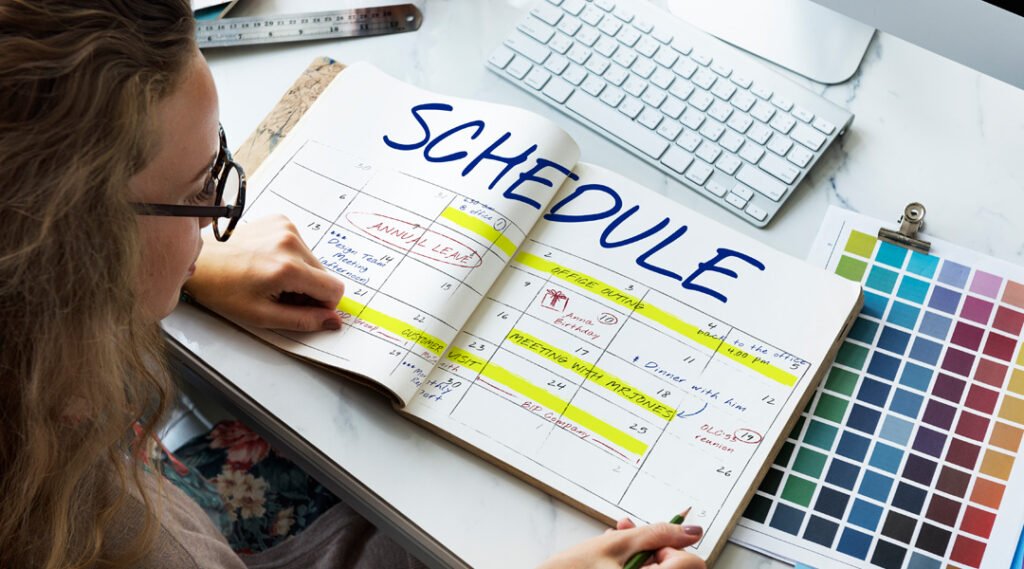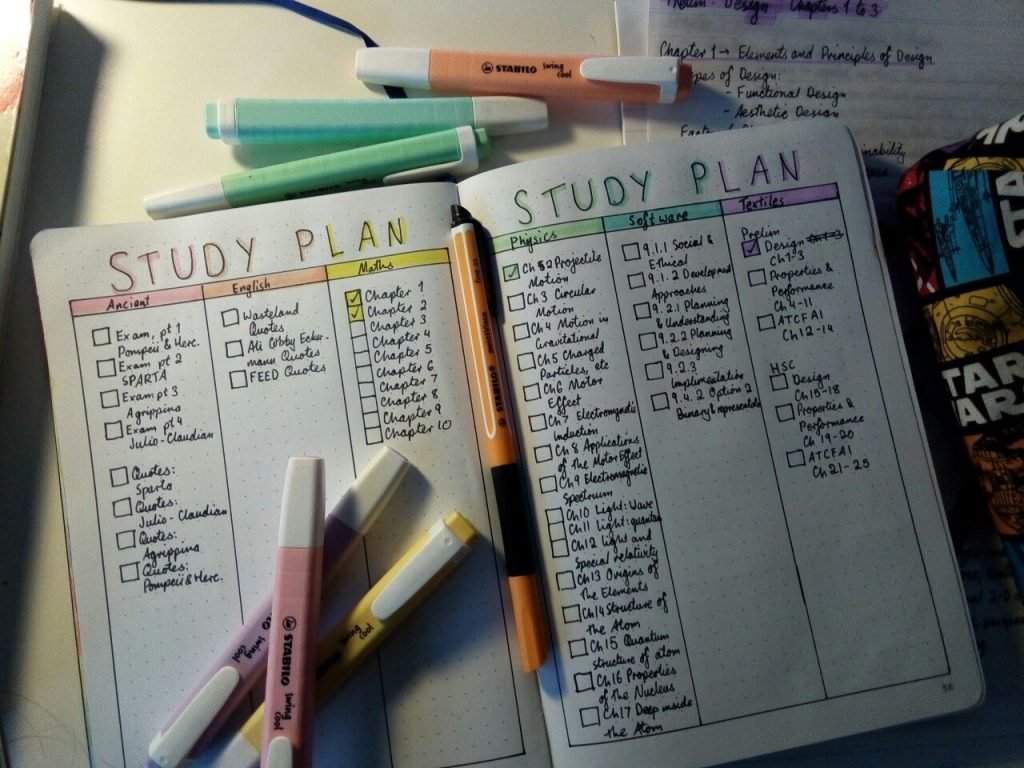
A Student’s Guide to Building a Learning Routine at Home
Studying from home has become the norm for many students over the past few years, and while it has its perks (hello, no commuting!), it also comes with unique challenges. Without the structure of a classroom or the motivation from peers, it can be tough to stay on track. That’s why having a solid learning routine is crucial for staying productive and focused.
In this guide, I’ll walk you through how to create a routine that works for you, helps you stay organized, and boosts your learning experience. Ready to level up your study game? Let’s dive in!

1. Set Clear Goals and Prioritize Tasks
Before diving into any routine, it’s essential to define your goals. What do you want to achieve each day or week? Do you need to complete a certain number of assignments? Is there a test coming up that requires extra focus?
How to set goals:
- Be specific: Instead of saying “study more,” say “complete 3 math problems and review chapters 3 and 4 in history.”
- Break it down: Large goals, like finishing a project or preparing for an exam, can be overwhelming. Break them down into smaller, manageable tasks.
- Prioritize: Identify your most important or time-sensitive tasks and start with them. Use a system like the Eisenhower Matrix (urgent vs. important) to decide what needs immediate attention.
By setting clear goals, you’ll have a clearer sense of direction, which will make it easier to structure your day.

2. Create a Dedicated Study Space 🖥️
One of the challenges of learning from home is the blur between “home” and “study time.” If you study in your bed or the living room couch, distractions are inevitable.
Tips for creating a study space:
- Choose a quiet, comfortable spot that’s free of distractions. A desk or table is ideal.
- Make it your own: Decorate your study area with inspiring quotes, plants, or anything that makes you feel motivated.
- Limit distractions: Keep your phone out of reach, turn off social media notifications, and let others in your household know when you need uninterrupted study time.
Having a dedicated space for learning signals to your brain that it’s time to focus, making it easier to get into a productive mindset.
3. Set a Realistic Schedule ⏰
Now that you’ve got your goals and study space in place, it’s time to structure your day. A well-planned schedule can help you stay on track and avoid procrastination. Remember, consistency is key!
Tips for a productive schedule:
- Time blocks: Use techniques like Pomodoro (study for 25 minutes, followed by a 5-minute break) or block off larger chunks of time for more focused work.
- Avoid overloading: It’s tempting to say you’ll study for hours on end, but this can lead to burnout. Aim for manageable study periods, and mix in breaks to recharge.
- Be flexible: Life happens, and sometimes things don’t go according to plan. Adjust your schedule when needed and don’t beat yourself up over it.
- Include personal time: Schedule breaks, meals, and relaxation. A well-rounded routine is essential for staying mentally and physically healthy.
If you’re not sure how to start, try this:
- Morning: Tackle your most challenging subjects (your brain is fresh!).
- Afternoon: Review and work on assignments.
- Evening: Relax and review lighter material.

4. Use Tools to Stay Organized 📅
Keeping track of assignments, deadlines, and study goals can quickly become overwhelming. Luckily, there are tons of tools that can help you stay organized and on top of your tasks.
Recommended tools:
- Trello or Notion: Both are fantastic for organizing tasks and projects. You can create boards or lists for each subject and easily track what’s due and when.
- Google Calendar: Block off study time, set reminders for assignments, and make sure you’re staying on top of deadlines.
- Habit Trackers: Apps like Habitica can help you stay on track by turning tasks into a game (perfect for adding some fun to your routine).
- To-do Lists: Sometimes the old-school pen-and-paper approach is the best. Make a to-do list at the start of each day and check things off as you complete them.
By staying organized, you can reduce stress and prevent last-minute cramming for exams or assignments.
5. Take Regular Breaks and Stay Active 🧘♀️
Long study sessions can lead to mental fatigue, and your productivity will drop. To avoid burnout, it’s important to take regular breaks and move your body.
How to incorporate breaks and activity:
- Use the Pomodoro Technique: Study for 25 minutes, then take a 5-minute break. After 4 study sessions, take a longer 15-30 minute break.
- Move around: Use your breaks to stretch, go for a walk, or do a quick workout. Physical activity helps boost your mood and keeps your mind sharp.
- Mental health matters: Don’t forget to take care of your mental well-being. Practice mindfulness, journal, or engage in activities that help you relax and recharge.
Regular breaks and physical activity aren’t just good for your body—they’re also key to maintaining focus and productivity over time.
6. Stay Connected and Ask for Help 🧑🏫
When learning from home, it’s easy to feel isolated. But remember, you’re not alone. Stay connected with classmates, teachers, and study groups.
How to stay connected:
- Join virtual study groups: Many students find it helpful to study with others, even if it’s online. Group studies can help keep you motivated and give you a chance to collaborate.
- Ask questions: Don’t hesitate to ask your teachers or tutors if you’re struggling with a concept. They’re there to help, and asking questions will clarify doubts.
- Stay social: Balance your learning routine with social activities, whether it’s a video call with friends or a virtual hobby club.
Maintaining a support system is essential for staying motivated and tackling any challenges you might face.
7. Review and Adjust Your Routine Regularly 🔄
A routine isn’t something that’s set in stone. As you progress through your studies, you’ll learn what works best for you and where you might need to make changes.
Tips for tweaking your routine:
- Evaluate your schedule at the end of each week. Did you accomplish everything you set out to do? If not, why? Adjust your goals and timing as needed.
- Be patient with yourself: Building a new routine takes time, and you might not get it perfect right away. Be flexible and kind to yourself as you figure out what works best for you.
Final Thoughts: Stay Consistent and Make It Work for You!
Creating a learning routine at home is all about finding balance between structure and flexibility. By setting clear goals, organizing your schedule, staying active, and staying connected, you’ll set yourself up for success.
Remember: Consistency is key. The more you stick to your routine, the more it will become a natural part of your day. Be patient with yourself, and don’t forget to take breaks and celebrate your progress!
Good luck, and happy studying! 🌟
